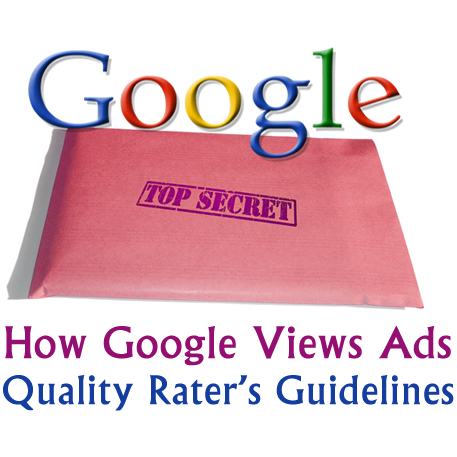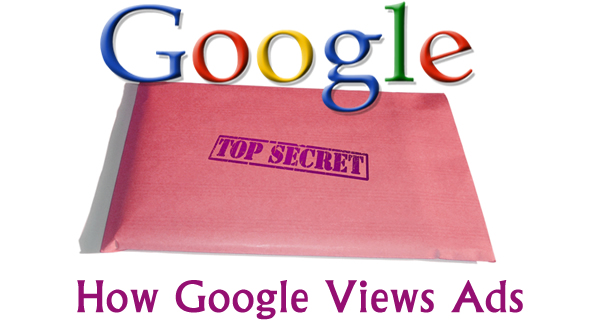One thing that is very apparent in the new version of the Google Quality Rater’s Guidelines is the role of advertising on webpages and how it affects overall webpage and website quality and the resulting quality scores.
Do Multiple Ads Always Equal Low Quality?
First, despite a lot of guidelines governing Google’s views on webpage’s advertisements and how it relates to quality, they do state in the Q&A that simply because a site has advertisements doesn’t automatically make it a low quality site.
In fact, they repeat numerous times that advertisements is how many websites can stay online.
This page has multiple ads on the right, in the middle, and at the bottom. Does that make it a Low quality page?
Not necessarily. Many High or Highest quality websites are supported by Ads. Without advertising and monetization, some webpages could not exist because it costs money to maintain a website and create high quality content. The presence or absence of Ads is not by itself a reason for a High or Low quality rating.
We have to look at many factors when rating Page Quality and page design is just one aspect to consider. Think about whether the page is functional and whether the MC is easy to find. Think about whether the Ads interfere with the MC or if the Ads can be mistaken for the MC.
But it is how the advertising is placed that makes the difference between a High quality rating and a Low or Lowest rating.
The Role of Page Design
First, there is a whole host of ways to display advertising that are not problematic to Google at all. But they definitely have ways that they feel hinders the user experience that they are asking their quality raters to watch for.
Here are some examples of pages with poor page design, organization, layout, or use of space, which should be rated Low:
- Many Ads or highly distracting Ads on the visible part of the page when it first loads in the browser (before you do any scrolling), making it difficult to read the MC.
- Repeated insertion of Ads between sections of the MC, so that the page jolts the user back and forth between MC and Ads in a way that makes the MC difficult to read.
- Invasive Ads, such as popups that cannot be closed.
- A large quantity of Ads with a relatively small amount of helpful MC.
- Text ads, placed beside or within the site’s navigation links, which may confuse users.
If a page seems poorly designed, take a good look. Ask yourself if the page was deliberately designed to draw attention away from the MC. If so, the Low rating is appropriate. Not sure? Keep looking for other High or Low quality characteristics.
Here we take a deeper dive into these areas and how Google might be looking at them algorithmically for possible future search changes.
Deceptive or Obtrusive Advertising
The one big concern that Google raises in the guidelines is whether advertising is deceptive or obtrusive. Could a visitor accidentally click an ad, believing it to be part of the navigation? Do ads cover up the content or otherwise interfere with the main content?
Some pages are designed to manipulate users into clicking on certain types of links through visual design elements, such as page layout, organization, link placement, font color, images, etc. We will consider these kinds of pages to have deceptive page design. Use the Lowest rating if the page is deliberately designed to manipulate users to click on Ads, monetized links, or suspect download links with little or no effort to provide helpful MC.
Google also warns about websites that try to “hide” advertising within navigation.
Another example of deceptive page design is to make Ads look like navigation links or SC [secondary content] links, or even part of the MC.
Doing this is nothing new – in fact, it used to be a popular AdSense adlink unit trick to include adlink units at the bottom with the footer navigation or before/after sidebar navigation.
Deceptive or obtrusive advertising is given a Lowest rating.
Scrolling For Content
Another tactic to encourage visitors to click on ads is to make a site top-heavy with advertising, hoping that a user will click on an ad before they even see the content they actually visited the page to see. While in organic search the page layout algorithm was targeting this specifically, it is still very common.
There are other examples of deceptive page design. For example, some pages are deliberately designed to have a large amount of Ads at the top so that the MC [main content] is not visible unless a user scrolls a lot to see the content at the very bottom of the page. In other words, some users may not even realize the MC is on the page.
Again, this is a tactic that Google states earns a webpage a Lowest rating for using.
Breaking Up Longer Content
It is a common advertising ploy to break up content – especially longer content – with an ad block every few paragraphs. In fact, it is only because Google AdSense restricts publishers to only 3 ad units per page that we don’t see this used more on smaller websites. But it is a quite common tactic on many news sites that would otherwise be considered high quality.
There probably is a double standard here. A smaller site will see their rating affected more heavily than a well known news site.
Too Many Ads for the Content
Google is also looking for a good balance between main content and advertising on a page. While Google already penalizes pages with thin content algorithmically, as well as penalizes for those with only ads above the fold, it is an interesting consideration if Google is looking at algorithmically determining a ratio of ads to content on a page, or ad unit sizes to content, and then adjusting the ranking accordingly.
Inline Advertising
While inline advertising is not nearly as common as it was a few years ago, Google definitely seems to consider it a poor user experience for visitors.
In addition, the popover ads (the words that are double underlined in blue) can make the main content difficult to read, resulting in a poor user experience.
For sites that have inline advertising, it is recommended raters give those pages a Low or Lowest rating.
Eternal Popups & Pop-Overs
Ah, those pesky popups and pop-overs. Fortunately, sites that have ones that cannot be closed tend not to be ranked in Google, however that doesn’t mean that sites can’t change overnight or that quality checkers might evaluate sites that are banned in Google.
This also brings up the question of sites that aren’t mobile friendly. I have often been on sites that have a pop-over that you can’t close on a mobile device, because as you scroll over to the right to see the X to close it, it just keeps moving further and further off the screen as the pop-over attempts to center itself on the screen. If quality checkers do mobile testing, this could be problematic for those sites. But that is also not the only reason why sites want to ensure they are mobile friendly.
Fake Search Results and Directories
While this shouldn’t come as a surprise, they also state that fake search result pages and directories are worthy of a Lowest rating as well.
Pages may use a variety of “tricks” or deceptive page design techniques. Here are two common types of pages with deceptive page design:
- A fake search page is a page with a list of links that looks like a page of search results. If you click on a few of the links, you will see that the page is just a collection of Ads disguised as search engine results. A “search box” is present on the page, but if you submit a new query in the search box, you just get a different page of Ads disguised as search results. “Fake search” pages are examples of deceptive page design.
- A fake directory page looks like a personally curated set of helpful links, possibly with unique descriptions. In reality, the links are Ads or links to other similar pages on the site. Fake directory pages are examples of deceptive page design.
Related Post Advertisements
While Google is emphasizing great supplementary content, which includes things like related posts to lead visitors to other related content within the same site, it is definitely not considering related posts from services such as Outbrain, Taboola, ContentClick and Disqus as being something it considers quality. Instead, it is viewing them as content that is often disguised to lead visitors to believe it is within the same site they are on, instead of what it really is – a paid advertisement that earns the site revenue for every visitor who clicks on one.
It is less clear how Google views these advertising products when these native ads are clearly labeled as “Sponsored Stories”, “Content from our Partners” or the like. However, very few websites seem to do this, and the third party services don’t seem eager to make the distinction either. And the issue seems to be whether it is obvious to Joe Surfer that they are paid advertisements rather than content on the site.
This is also an issue that the Advertising Standards Advisory (ASA) has been dealing with in the UK, and there are now much clearer rules regarding these types of advertisements having appropriate disclosure. These now have to be clearly labeled with “Promoted Stories” as well as have the company name spelled out instead of a simple company logo these products often used previously. However, the change is specific to the UK, and the adoption of changes isn’t becoming widespread.
There is also the issue that some of these “related post” advertisements are filled with spammy content such as male enhancement aids or stories with accompanying photos of mostly naked women. Those are going to appear spammy to a visitor (and leave a bad impression of your site) unless your site has a demographic where they expect to see that type of content already – it might not look out of place on a site like College Humor or Chive, but would look completely out of place on Suzie’s Baking Blog.
What Should SEOs Do?
It isn’t surprising Google is going after deceptive advertising. We have seen the page layout algo hit some sites, although it was primarily targeting those sites that were heavy on the ads above the fold, while relegating the actual content (if there was much of it) below the fold. Google is very likely trying to expand on their page layout algo to develop an algorithm to detect some of the more abusive ad placements that tend to trick visitors into clicking them without realizing they are ads.
If your website has non-deceptive advertising and doesn’t go overboard with the number of ads compared to the main content on the page, you have nothing to worry about. But if you are all about getting every last penny out of your advertisements on every webpage, you might want to evaluate which ads are working on your site and which ones aren’t, so you can look at reducing the ads before Google decides to up the ante with a harsher version of the Page Layout Algorithm.
Jennifer Slegg
Latest posts by Jennifer Slegg (see all)
- 2022 Update for Google Quality Rater Guidelines – Big YMYL Updates - August 1, 2022
- Google Quality Rater Guidelines: The Low Quality 2021 Update - October 19, 2021
- Rethinking Affiliate Sites With Google’s Product Review Update - April 23, 2021
- New Google Quality Rater Guidelines, Update Adds Emphasis on Needs Met - October 16, 2020
- Google Updates Experiment Statistics for Quality Raters - October 6, 2020

